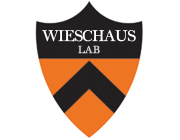Maternal-effect mutations altering the anterior-posterior pattern of the Drosophila embryo.
Publication Year
1986
Type
Journal Article
Abstract
Mutations in seven different maternal-effect loci on the second chromosome of Drosophila melanogaster all cause alterations in the anterior-posterior pattern of the embryo. Mutations in torso (tor) and trunk (trk) delete the anterior- and posterior-most structures of the embryo. At the same time they shift cellular fates which are normally found in the subterminal regions of the embryo towards the poles. Mutations in vasa (vas), valois (vls), staufen (stau) and tudor (tud) cause two embryonic defects. For one they result in absence of polar plasm, polar granules and pole cells in all eggs produced by mutant females. Secondly, embryos developing inside such eggs show deletions of abdominal segments. In addition, embryos derived from staufen mothers lack anterior head structures, embryos derived from valois mothers frequently fail to cellularize properly. Mutations in exuperantia (exu) cause deletions of anterior head structures, similar to torso, trunk and staufen. However in exu, these head structures are replaced by an inverted posterior end which comprises posterior midgut, proctodeal region, and often malpighian tubules.The effects of all mutations can be traced back to the beginning stages of gastrulation, indicating that the alterations in cellular fates have probably taken place by that time. Analysis of embryos derived from double mutant mothers suggests that these three phenotypic groups of mutants interfere with three different, independent pathways. All three pathways seem to act additively on the system which specifies anterior-posterior cellular fates within the egg.
Journal
Roux Arch Dev Biol
Volume
195
Issue
5
Pages
302-317
Date Published
07/1986
ISSN Number
0930-035X
Alternate Journal
Rouxs Arch. Dev. Biol.
PMID
28306055

